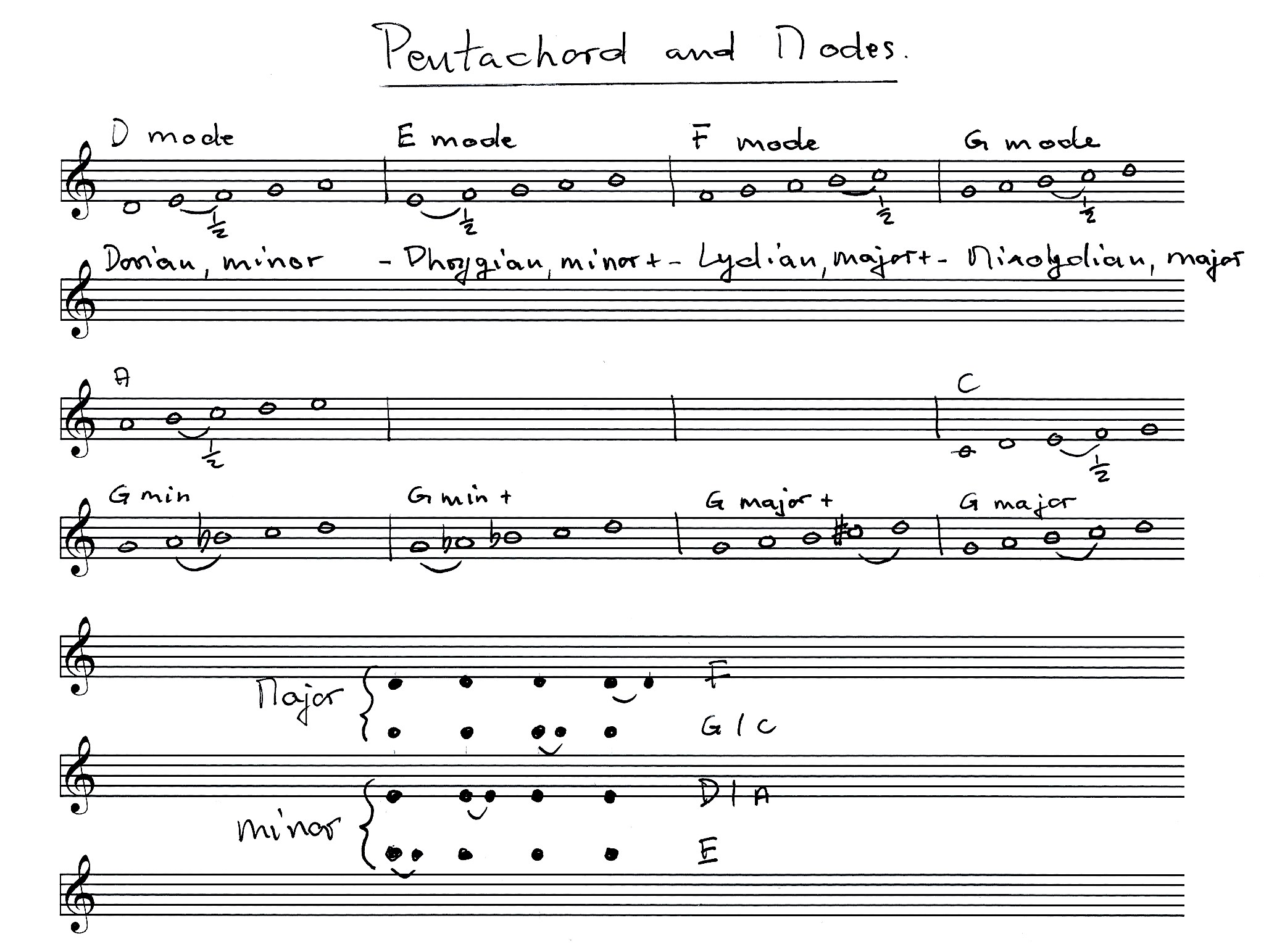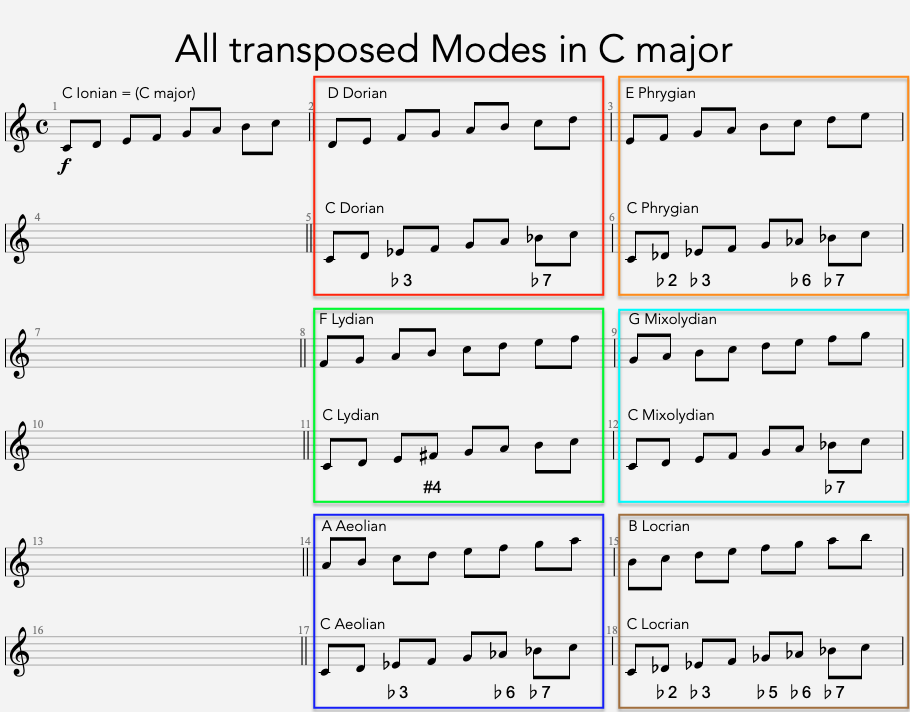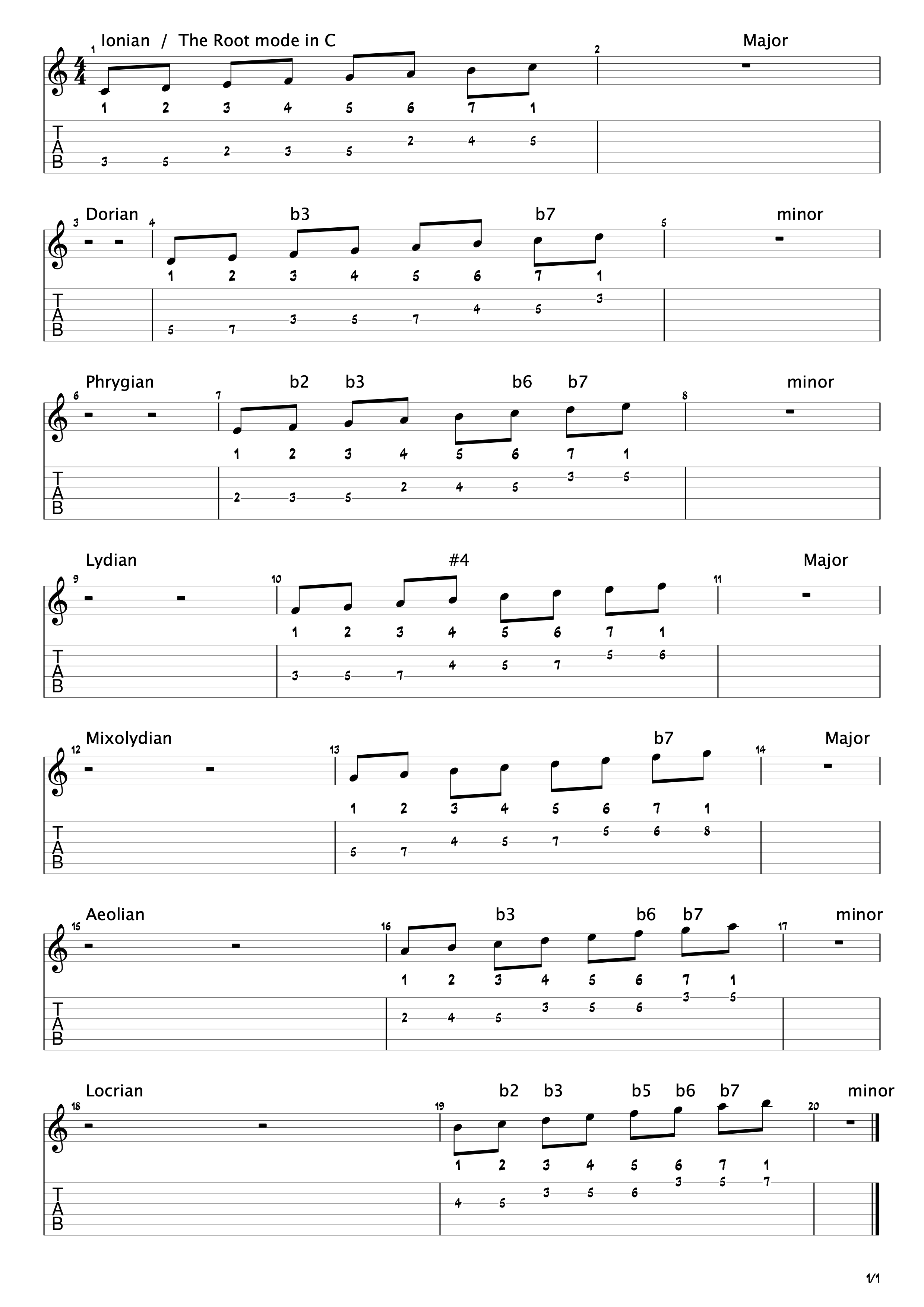Greek Modes
Remark on about this page: The topics I try to explain hereby is an overview of what I believe is part of our western musical history. I have also to grant that it represents a tremendous period of time and a lot of reading to compile as well. So sometimes I might not be strict about dates or period of times I give here. Therefore, I will update this page as soon as I find additional or more relevant information. (feel free also to correct me if necessary)
Ancient Greek Modes and Pentachord
Well before we could talk about major or minor keys, scales and so on, music was "written" or considered as a modal system. Modes are named after the ancient Greek modes. Originally there were four of them. D , E , F , and G mode. Certain name of Greek Modes refer to geographic or ethnic regions in ancient Greece. The Dorians were people living in Paestum, a region situated near Naples-Salerno Italy. Modes would also make men sad and grave, others modes would the relaxed the mind, some others would produce a moderate or settled temper, which appears to be the peculiar effect of the Dorian mode. According to Platon, the Phrygian mode would inspire enthusiasm and could give courage to warriors.
The Pentachord
Here is below, in ancient Greece, the idea behind the Pentachord and Modes. Penta (from Greek "five of something" and chord (chordon - "string"). The picture below, with the black dots, "explains" the principle of an instrument with five strings. Three full tones and one semitone. See the position of this semitone in D mode for instance and compare it with the minor key we have today.
The Medieval Church Modes
About 520 AD Anicius Manlius Boethius, a Roman scholar, Christian philosopher, and statesman wrote on theology, composed a pastoral poem, and was most famous as a translator of works of Greek logic and mathematics. He also translated Aristotle's works into Latin and wrote articles on music theory. Boethius embraced Aristotle's concept of ethos and assigned the ancient Greek views of mood creation and character formation to the church modes. He also assumed that the modes used in church services matched the ancient Greek modes named by Aristotle.
Later, about 600 AD, Pope Gregory I (after whom Gregorian Chant was named) classified all the music used in the church. While Gregory certainly knew of Boethius assignment of ancient Greek names to the modes used for church music, the church continued to use the number system. We can assume that by the 900 AD the ancient Greek mode names were progressively replaced by the Medieval Church Modes.
Heinrich Glarean and Gioseffo Zarlino
In 1547, Heinrich Glarean published Dodecachordon in which he posited that in addition to the 4 existing pairs of church modes (plagal and authentic versions of modes with finals on D (Dorian), E (Phrygian), F (Lydian), and G (Mixolydian)), there should also be pairs of modes on A (Aeolian) and C (Ionian). This brought the number of modes from 8 up to 12, and caused quite a stir among music theorists. In 1571, Gioseffo Zarlino, in Dimonstrationi harmoniche, affirmed these extra modes, and went so far as to renumber all the existing modes, placing C (Ionian) first.
As a matter of facts, these modes went on to become what we call major and minor keys, but at this point, they were not called like this. Furthermore, the "Ionian"/"Aeoliean" terminology seems to have never been widely adopted (outside of the realm of theorists) until very recently, even though the concepts themselves were. At some point in the Baroque era, even before tonality had been formalized, pieces were being labeled as being modal. See the BWV 538 - Toccata & Fugue in D Minor "Dorian". It is named Dorian but this piece is clearly in D Minor key. (C# being the leading tone of D ). It is also "believed" that by the time Jean-Phillipe Rameau published his Treatise on Harmony in 1722 the terms were already in wide circulation. (Of course, in 1725, Fux's more historically conservative Gradus Ad Parnassum was still referring to the six modes.)
The Modes we use Today.
So let's start now with Modes we use today. (at least at this point we can be certain about what we assert) There are seven modes: Ionian, Dorian, Phrygian, Lydian, Mixolydian, Aeolian and Locrian. Let’s take a look at the picture: Modes in C major, below. They are all the modes in C major: C Ionian, D Dorian, E Phrygian, F Lydian, G Mixolydian, A Aeolian, B Locrian. Very often, one takes the image of the white keys of a piano played from C to C, to D to D and so on. (See picture below)The whites keys from C to C give the Ionian mode, from D to D the Dorian mode, from G to G the Mixolydian mode and so on. It is a matter of shift. See more in detail the Comparison Mode picture Below. You will notice the right shift among the notes. So, what is crucial here to understand is the result of that shift. In C Ionian, we have a major Third, (C, E, G. However, in D Dorian it a minor Third (D, F, A). This is the "purpose" of the modes. It is to give to each mode its colouration. Take a look now at the picture: All transposed modes in C major and see the difference between D Dorian and D natural minor. This why we consider Modes as being different as Scales.





